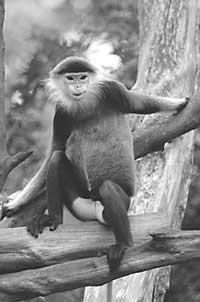Duplicate genes in the middle of the debate
The critically endangered langur offers scientists new information on evolution. This monkey has a duplicate gene, but its function is different from that of the original gene. Experts discuss how duplicate genes change naturally by reconstructing the path of change.

Duplicate genes in the history of evolution have been exposed in various organisms without waiting. This dubbing can be the key to explaining the genesis and adaptation of new genes. However, scientists do not agree to explain how the function of duplicate genes naturally changes.
While some focus on positive selection, others on negative selection. Now, analyzing the langur hankabeltza, they say they both. Researchers have found that this monkey contains a duplicate gene for the enzyme ribonuclease. This duplicate gene, instead of being related to ribonuclease, has become the encoder of a digestive enzyme.
Scientists created 9 enzymes mutated between two enzymes. Thus they saw that the gene of each mutated enzyme in the pathway was less related to ribonuclease and a negative selection was demonstrated. But they also saw the gene developing too quickly, so they knew the choice was also positive. However, the main reason for duplication has not yet been found, as it is not only about finding how the original function changes, but also how the new function is achieved.





